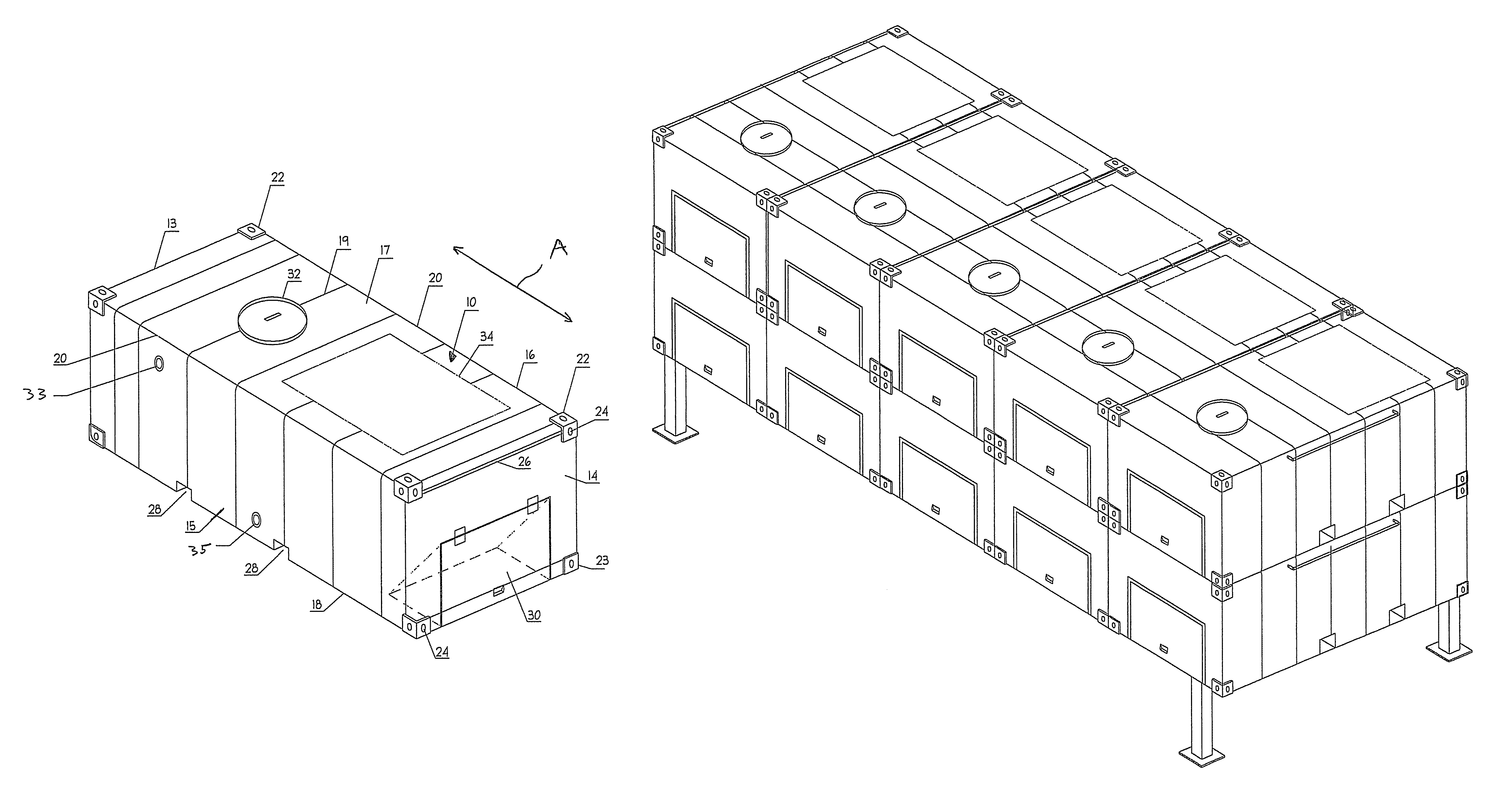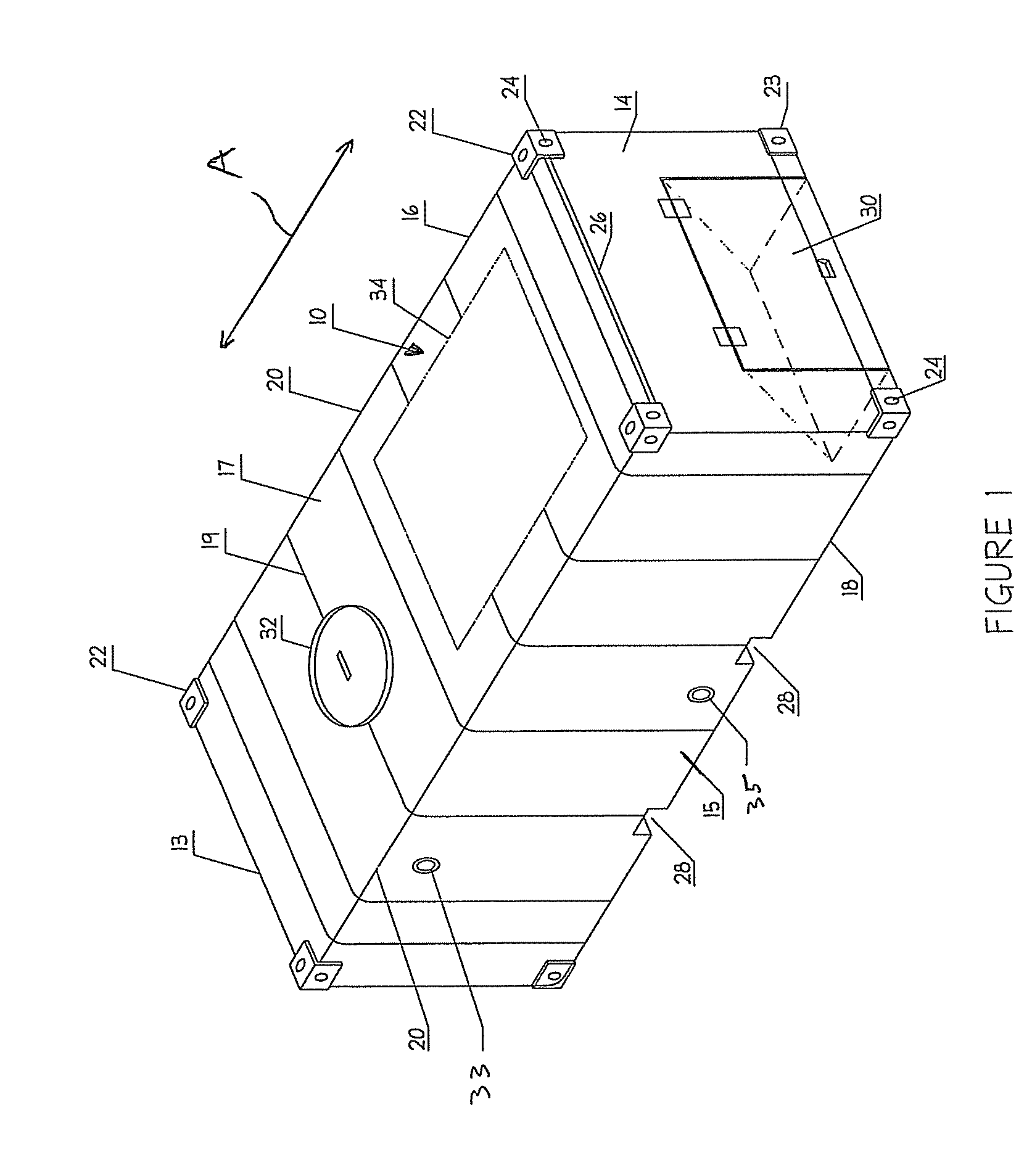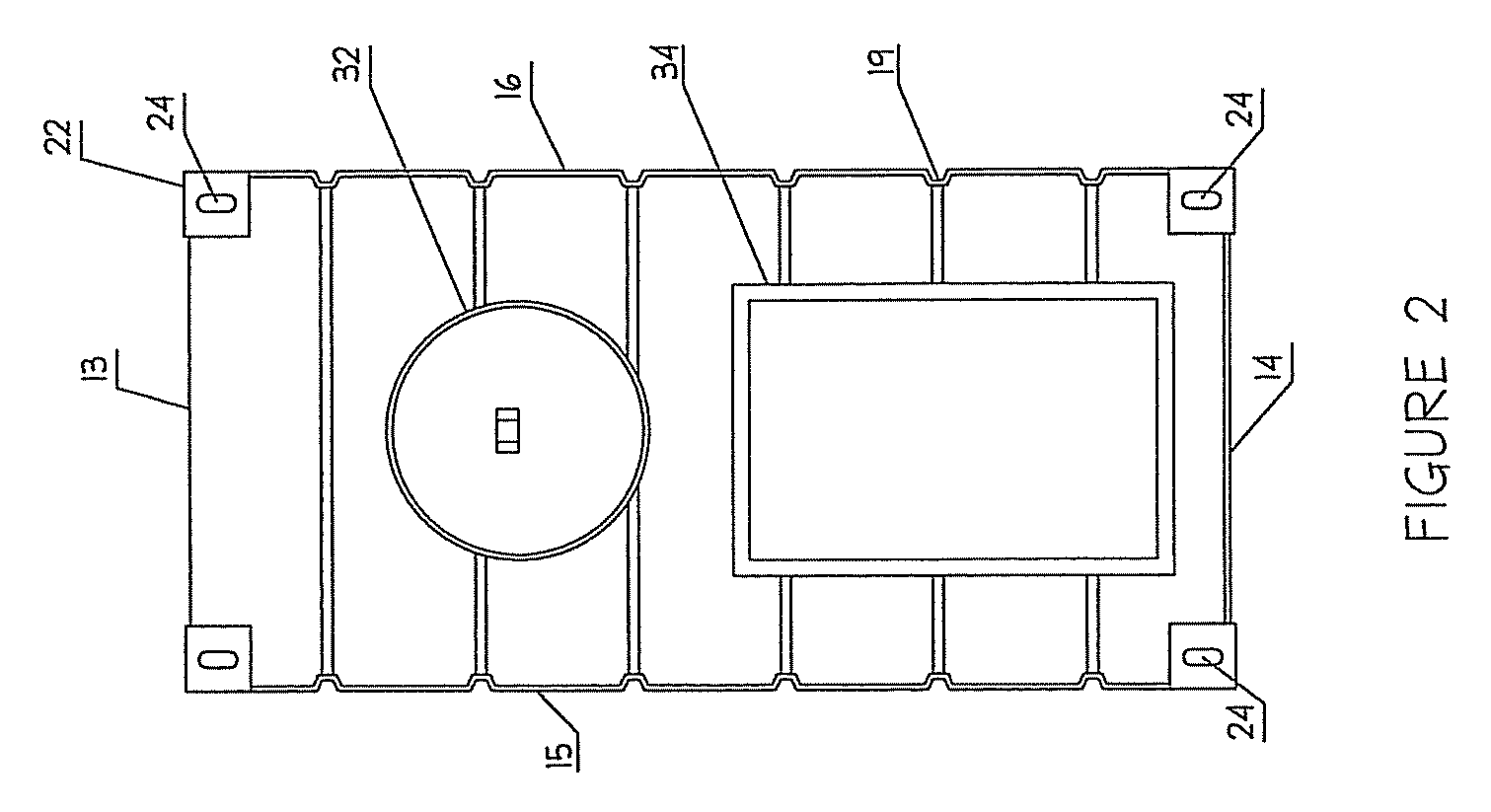Shipping containers for flowable materials
a flowable material and container technology, applied in the direction of transportation and packaging, tray containers, transportation items, etc., can solve the problems of extreme flammability of some flowable materials such as gasoline and other fuels and chemicals, lack of vertical and horizontal linking and hoisting components in flowable materials vessels (or tanks), and constrain the amount of fuel that can be transported, so as to facilitate container informatics, minimize the weight of containers, and optimize logistics
- Summary
- Abstract
- Description
- Claims
- Application Information
AI Technical Summary
Benefits of technology
Problems solved by technology
Method used
Image
Examples
Embodiment Construction
[0029]FIG. 1 illustrates a lightweight, intermodal and modular container 10 for shipping flowable materials that is compatible with existing military and civilian transportation infrastructure, equipment, vehicles, and regulations. Flowable materials may include liquids such as water, fuel, or other chemicals, and may also include any other material capable of flowing such as sand, grain, slurry, etc. Certain embodiments of the present invention may employ containers for flowable materials generally, containers for liquid flowable material, containers for non-liquid flowable material, and containers for specific liquids such as water or fuel, including gasoline, ethanol, diesel, kerosene, or jet propellant (e.g., JP-8).
[0030]The container 10 is formed by planar front and rear end walls 13 and 14, generally planar left and right side walls 15 and 16, and generally planar top and bottom walls 17 and 18. (A longitudinal direction from rear to front is provided by arrow A.) Each of the ...
PUM
 Login to View More
Login to View More Abstract
Description
Claims
Application Information
 Login to View More
Login to View More - R&D
- Intellectual Property
- Life Sciences
- Materials
- Tech Scout
- Unparalleled Data Quality
- Higher Quality Content
- 60% Fewer Hallucinations
Browse by: Latest US Patents, China's latest patents, Technical Efficacy Thesaurus, Application Domain, Technology Topic, Popular Technical Reports.
© 2025 PatSnap. All rights reserved.Legal|Privacy policy|Modern Slavery Act Transparency Statement|Sitemap|About US| Contact US: help@patsnap.com



